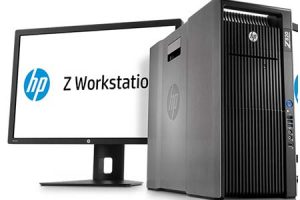The reinvention of HPs desktop PCs meets, the company claims, the compute power needs demanded by the worlds inventors of change. The HP Z8, Z6 and Z4 desktop workstations, expected to be available in EMEA from October 2017, are reportedly equipped with power, security and innovative design, future-proofed to support the fields of virtual reality, machine learning […]
 The reinvention of HPs desktop PCs meets, the company claims, the compute power needs demanded by the worlds inventors of change.
The reinvention of HPs desktop PCs meets, the company claims, the compute power needs demanded by the worlds inventors of change.
The HP Z8, Z6 and Z4 desktop workstations, expected to be available in EMEA from October 2017, are reportedly equipped with power, security and innovative design, future-proofed to support the fields of virtual reality, machine learning and advanced design.
HPs new portfolio includes security features such as HP SureStart, the HP Client Security Suite and more.
The stakes for world-class security have never been higher or more important for workstations, said Gwen Coble, director, Workstations, Thin Clients, Retail Solutions and Immersive Computing, EMEA, HP Inc. Workstation users create the most valuable IP for a company and HP is meeting the security needs with the worlds most secure and manageable desktop and mobile workstations. As the most powerful desktop workstation in the world, the HP Z8 Workstation can deliver the extreme power and the security demanded by our customers.
The new workstations incorporate Thunderbolt 3 (optional) and Dual 1GbE Ports (standard) to support the high bandwidth data transfer demanded by current and future users, as well as Microsoft Windows 7b support for legacy workflows. Each of them offers modular front IO with USB 3.1 G2 Type C ports. The Z8 and Z6 models each support up to dual CPUs, and an optional dual 10 GbE network module for high speed networking at half the cost of current HP Workstations, and without consuming a PCIe expansion slot.
Users can run 3D simulations and edit 8K video in real time with up to 56 processing cores and up to 3 TB of main memory, 3x the capacity of its predecessor.
A split chassis architecture enables rear access to the hefty 1700 W power supply with a locking mechanism, 24 DIMMs, and a total of 9 PCIe slots (7 full length, full height PCIe slots and two internal PCIe personality slots) to bring this machine to life for specialised workflows. The HP Z8 Tower has 67% more memory bandwidth, 27% greater processor core count capacity, 40% greater PCIe I/O bandwidth and 29% greater power supply capability as compared to the Z840 for customers running demanding workloads.












































































